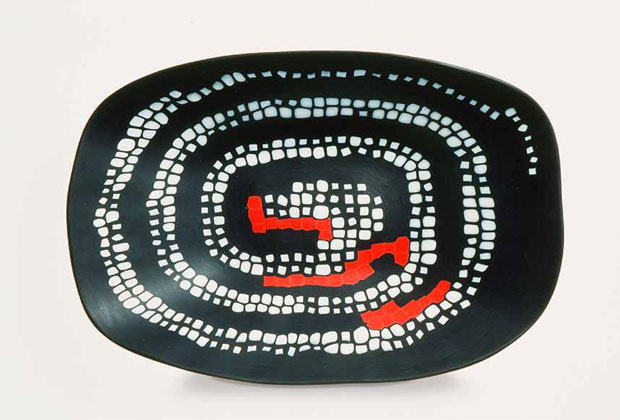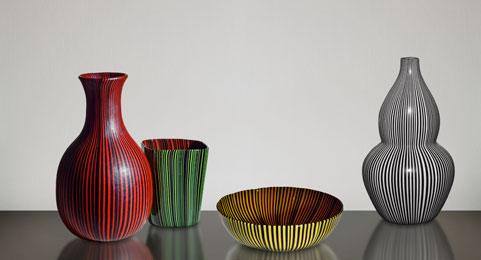
Carlo Scarpa's pioneering glassware at The Met
Italian architect's innovative glassware demonstrates how central local craftsmanship was to his work
As Phaidon editor Tom Wright explains in this article introducing our Carlo Scarpa monograph, the great Venetian architect's work often demonstrated the weight of something, "the heaviness of the building, if it's concrete, and the lightness of it if it's glass."
Fine glassware might seem like a less-obvious medium to work in for one of the 20th century's most respected architects, yet after graduating from Accademia di Belle Arti in Venice, Scarpa initiated a parallel career as a glass designer. "Working in [Venice's glass-production centre] Murano, first with MVM Cappellin from 1926-31," as Robert McCarter explains in our book, "and then with Paolo Venini from 1932-47. Scarpa became an acknowledged master in glass design well before his architectural works began to receive substantial recognition."

It is his later work that the forthcoming Metropolitan Museum of Art focuses on in its forthcoming show Venetian Glass by Carlo Scarpa: The Venini Company, 1932-1947. The exhibition, in galleries 964 and 965 of the Robert Lehman Wing, 4 November 2013 to 2 March 2014, displays about 300 of Scarpa's pieces chronologically.
Although plenty of his pieces are still available today, many others were one-offs, created by Scarpa and the Venini craftsmen, often, surprisingly, from the dregs of that day's production. While certain works are often regarded as pieces of modern abstract art, rather than simple, functional vessels, Scarpa's glassware is also noteworthy because he pioneered and sought to revive many production techniques. Visitors should look out for murrine tessere, or setting of slices of glass canes into a thin plate of glass; mezza filigrana, wherein the glass is blown into the thinnest possible structure, creating an incredibly light piece; and bollicine, a technique whereby adding certain ingredients, tiny bubbles form in the glass.
In all it's a fascinating exhibition, demonstrating how important fine materials and strong craftsmanship were in Scarpa's practice. For more on the exhibition, go here. For greater insight into the man's life and work, including his glassware, do pick up a copy of our monograph; (there's a nice anecdote about Frank Lloyd Wright's love of Scarpa's Venini pieces on page 25). And, remember, if you're a Phaidon Club member, you can gain rewards points, as well as access to exclusive events and offers.